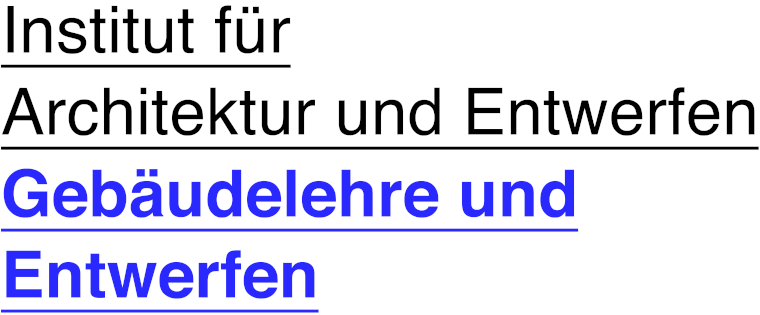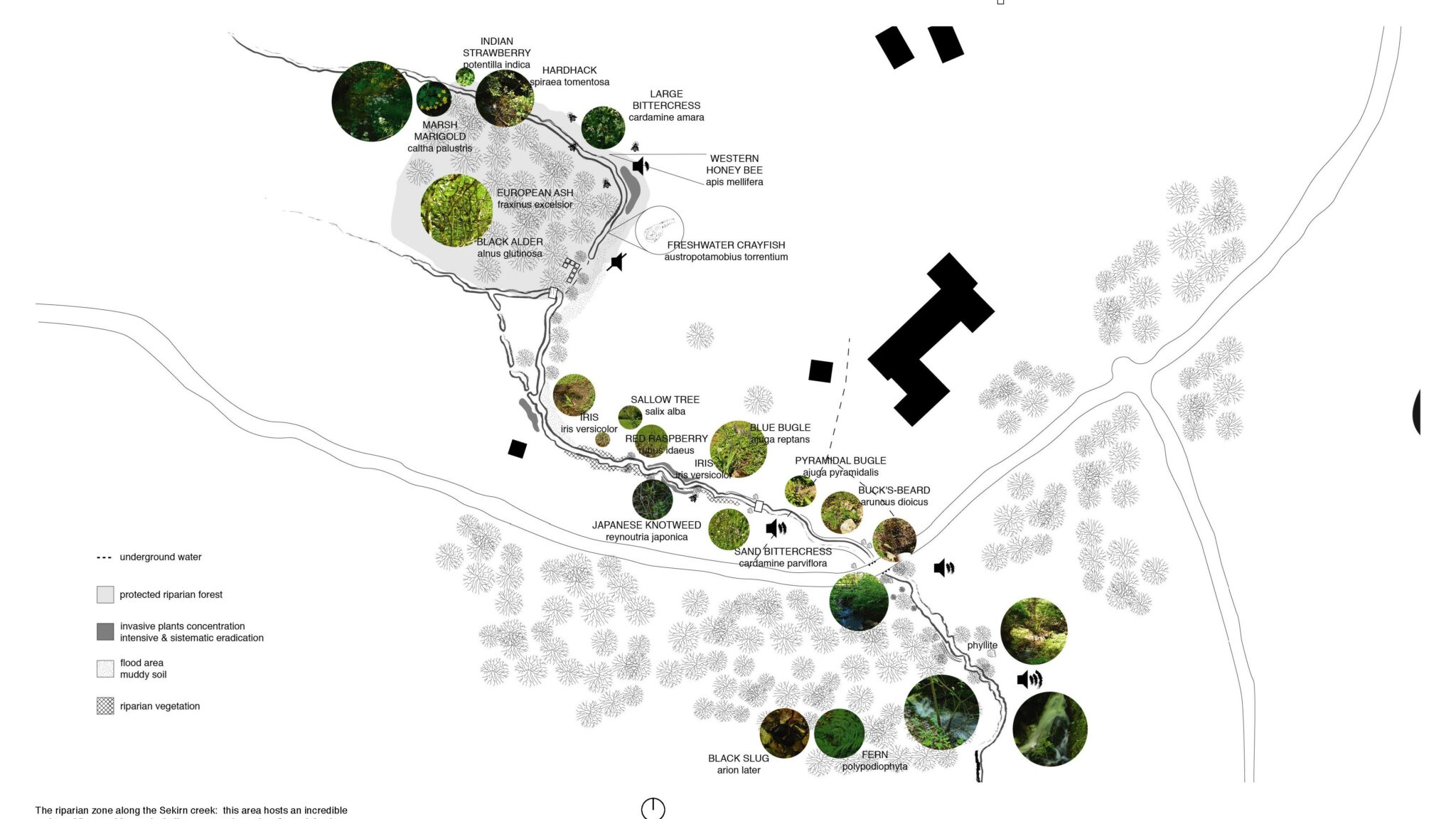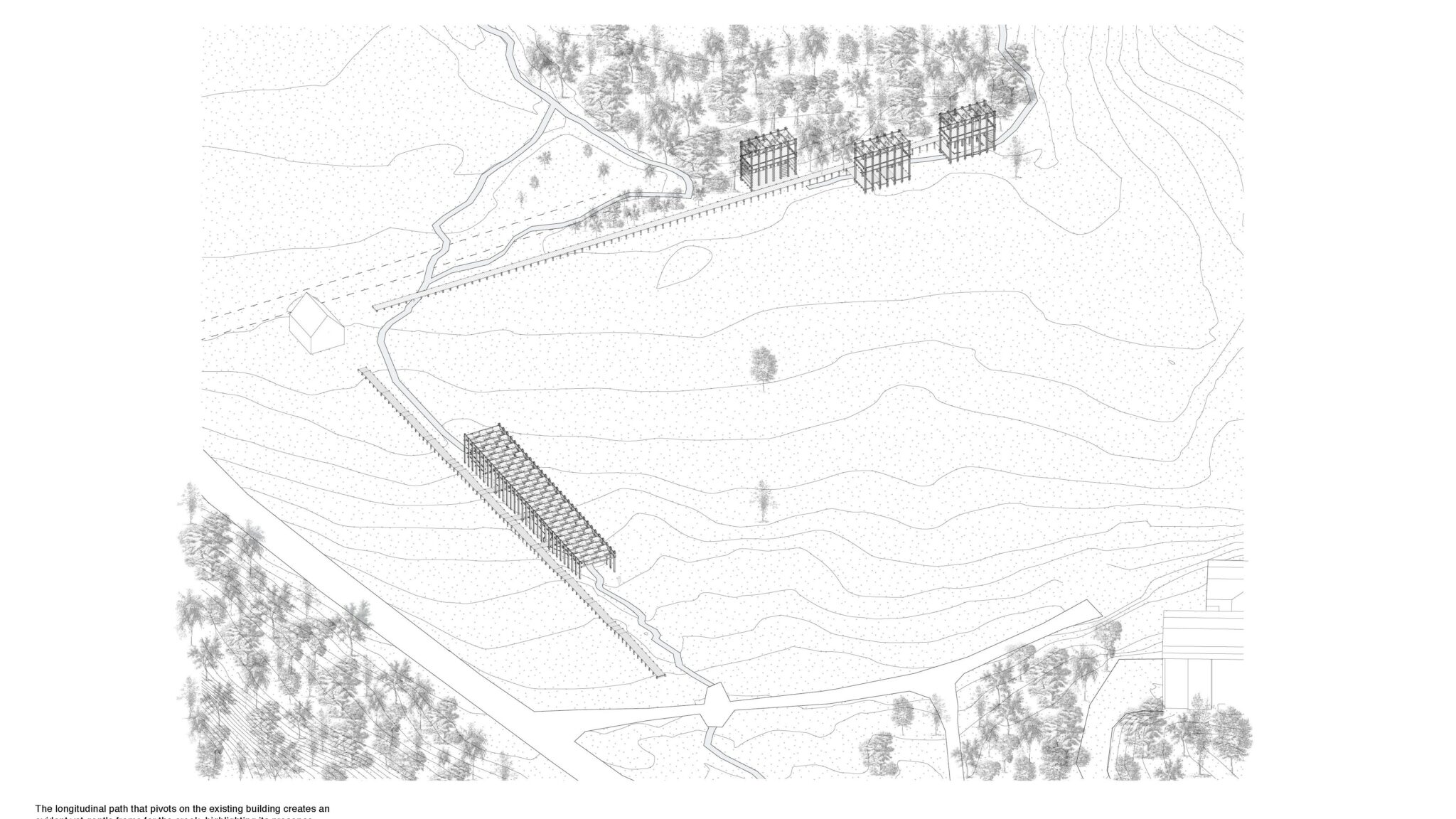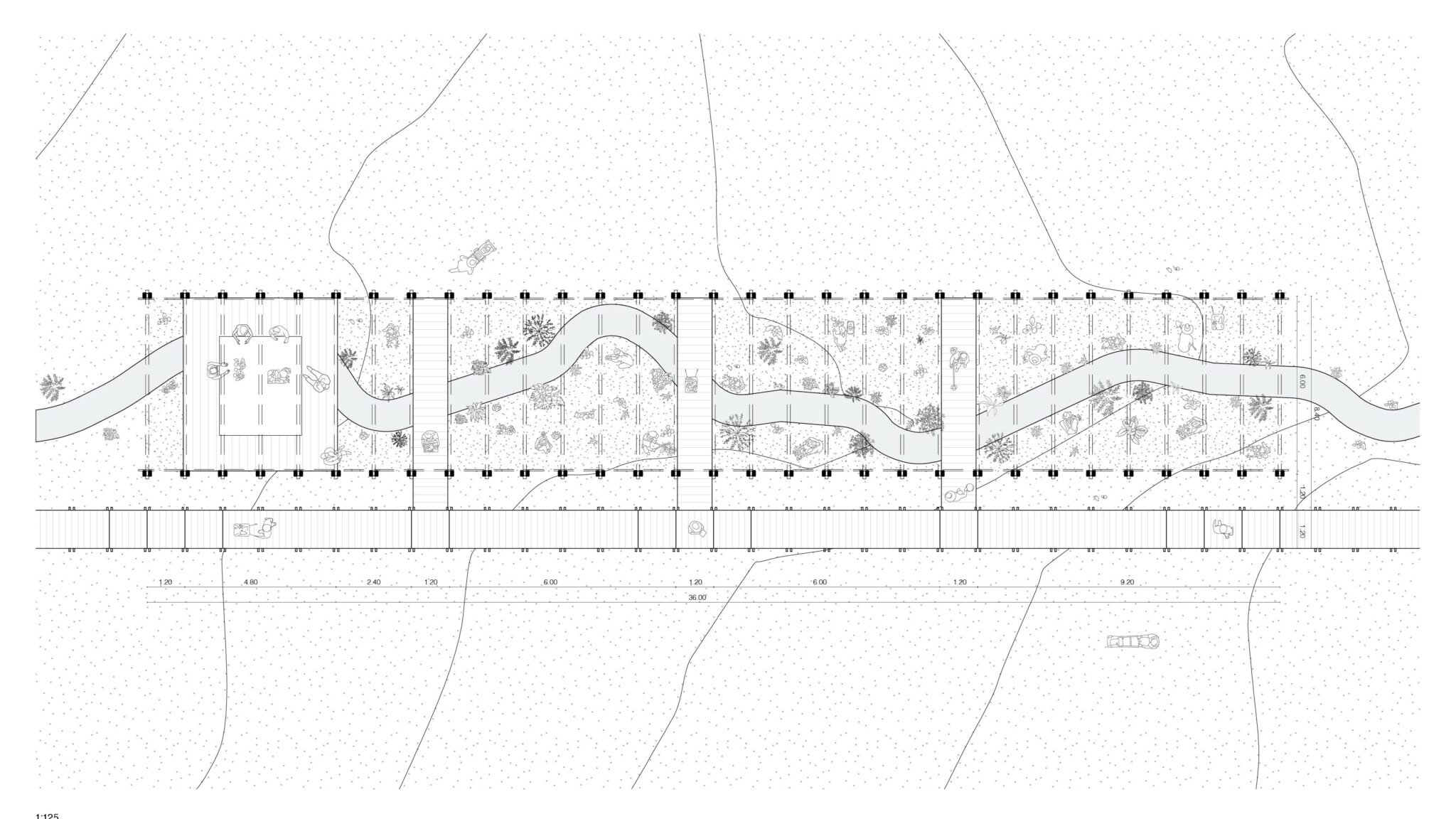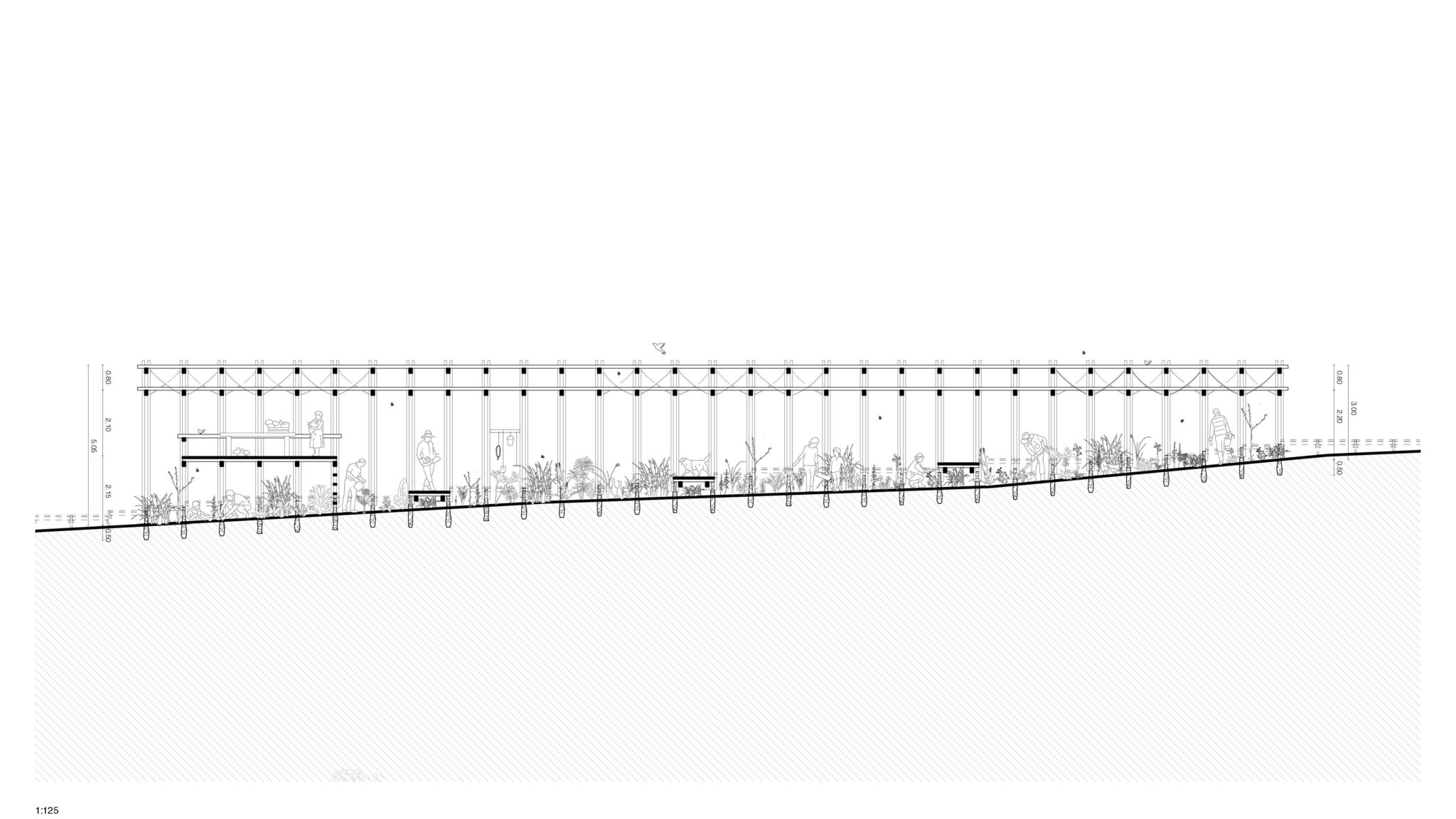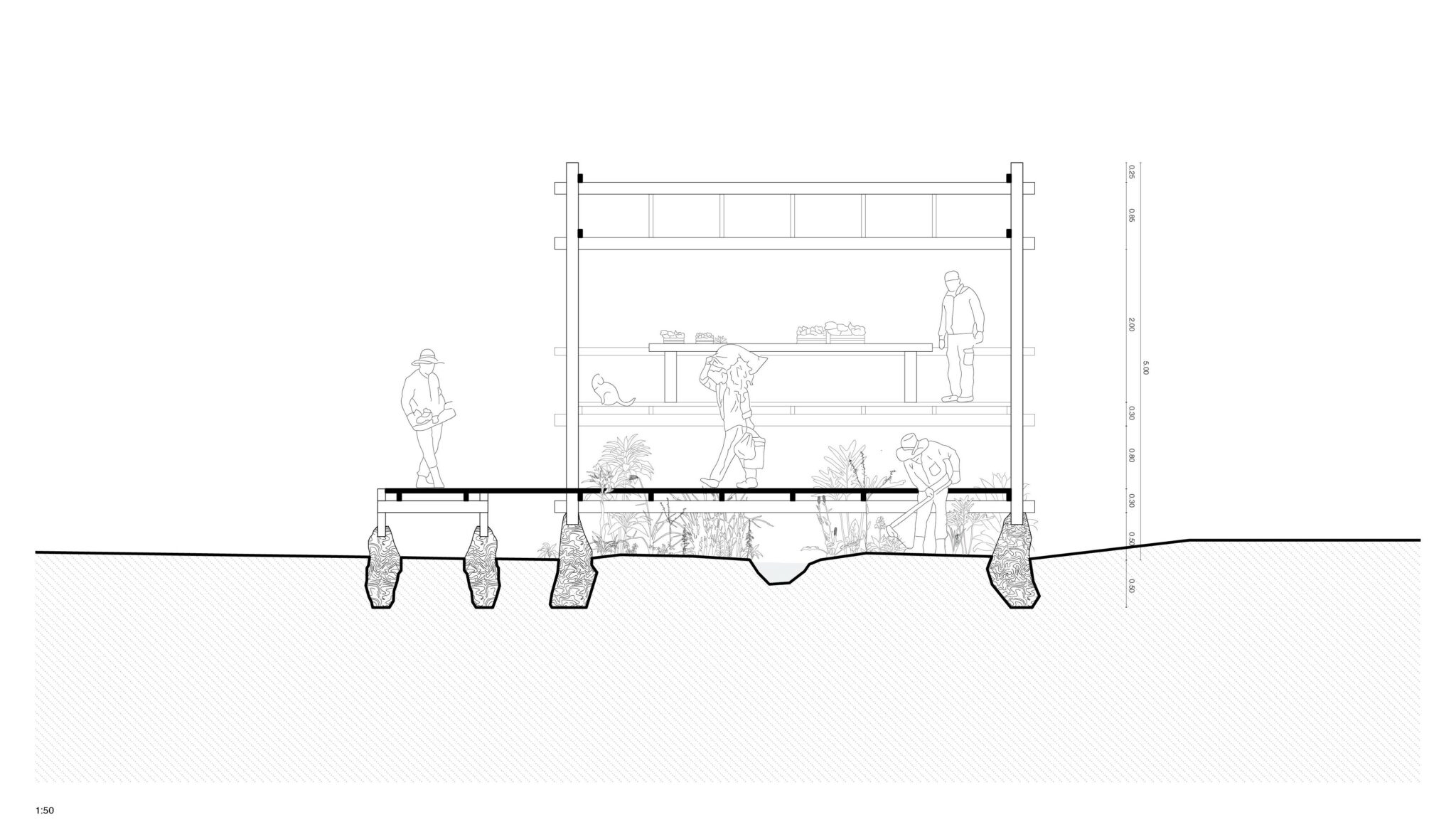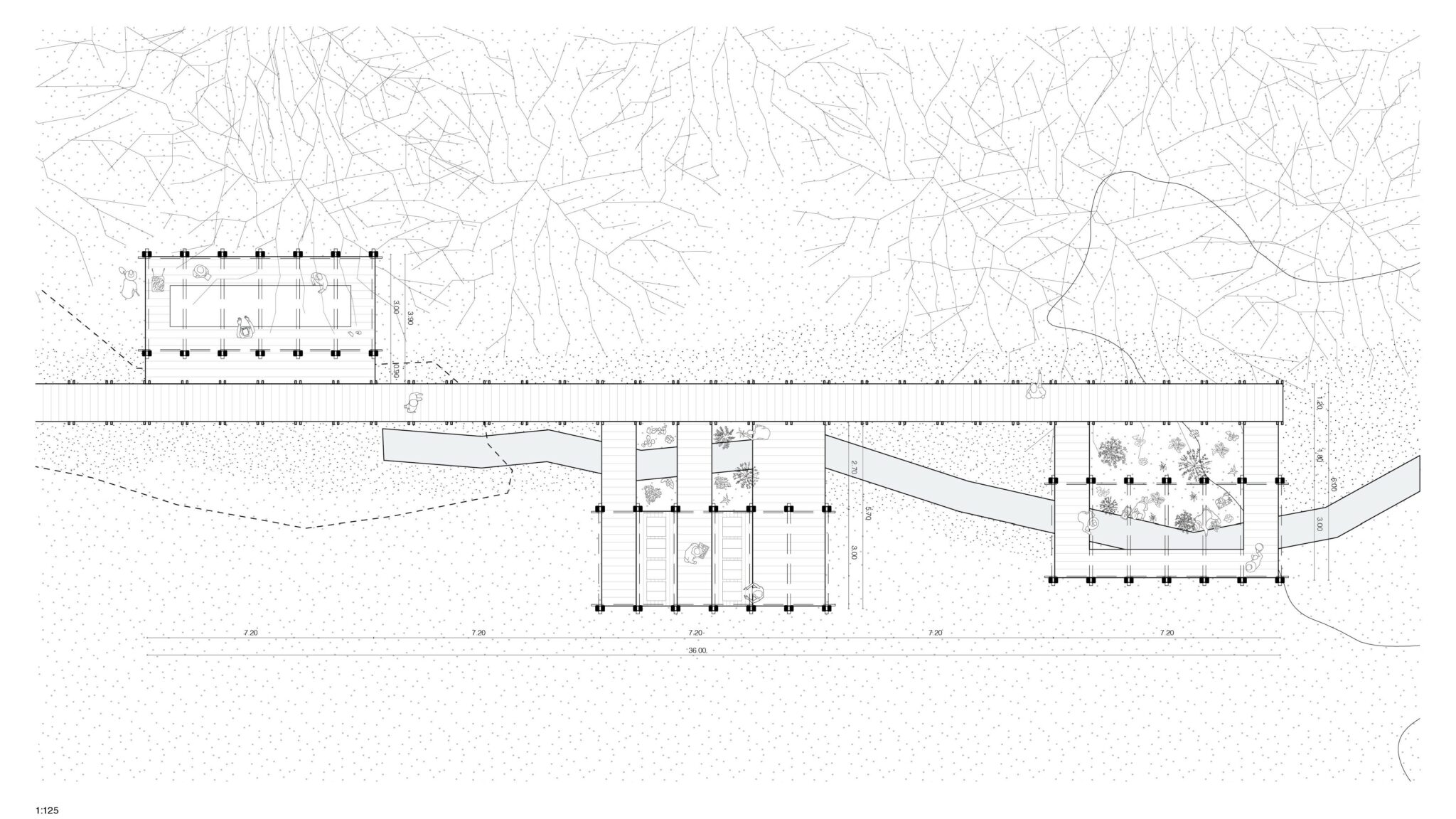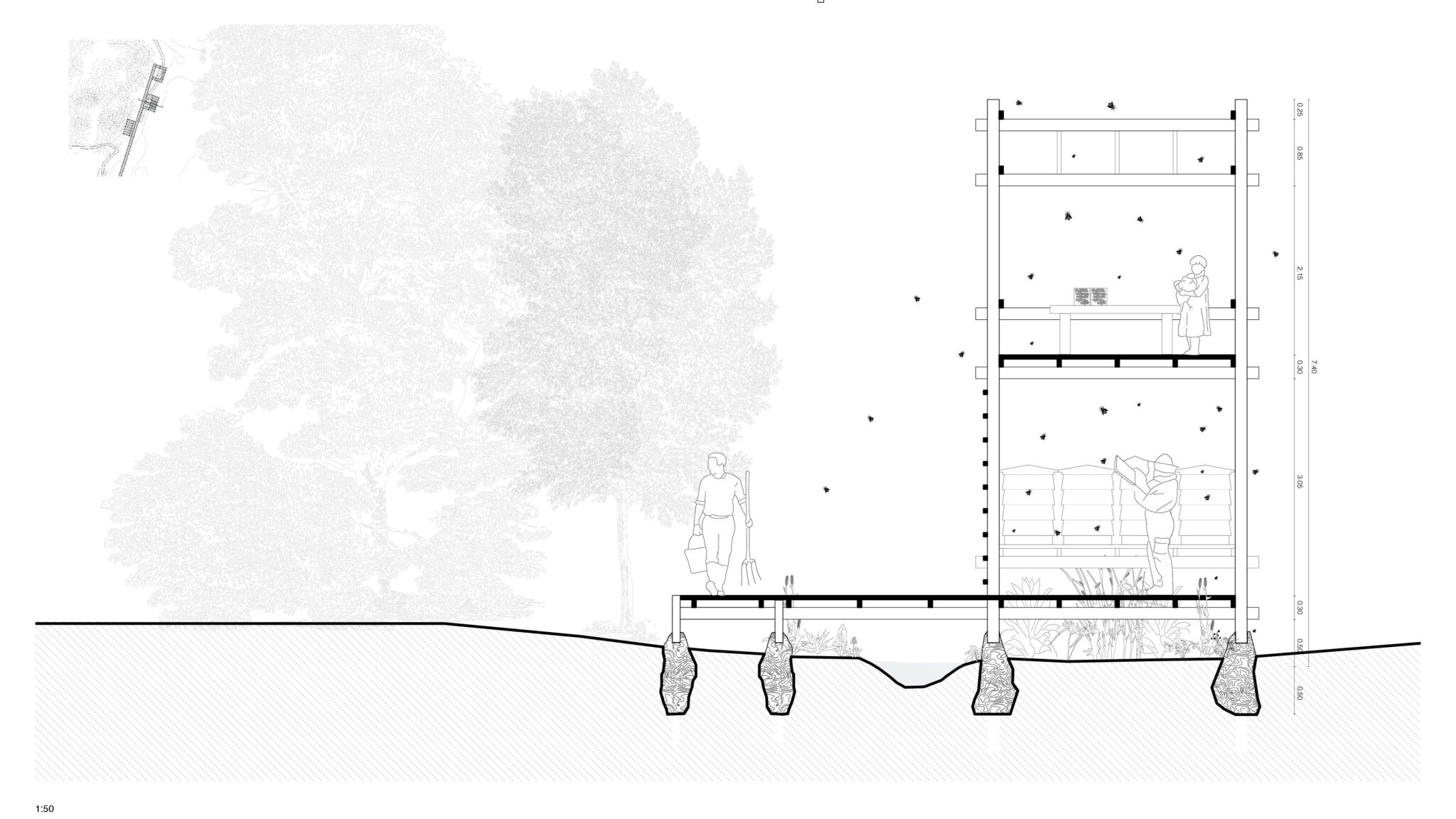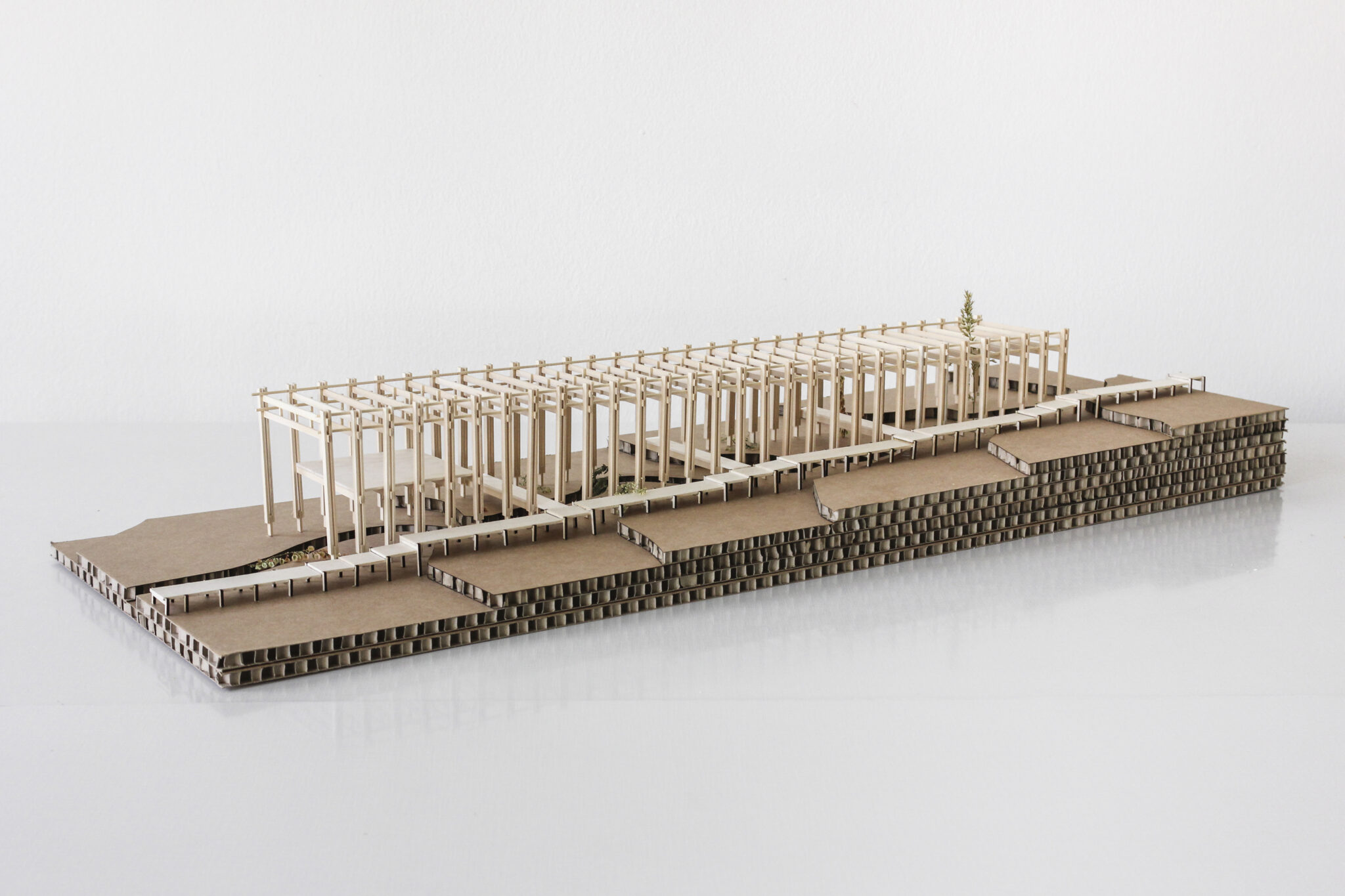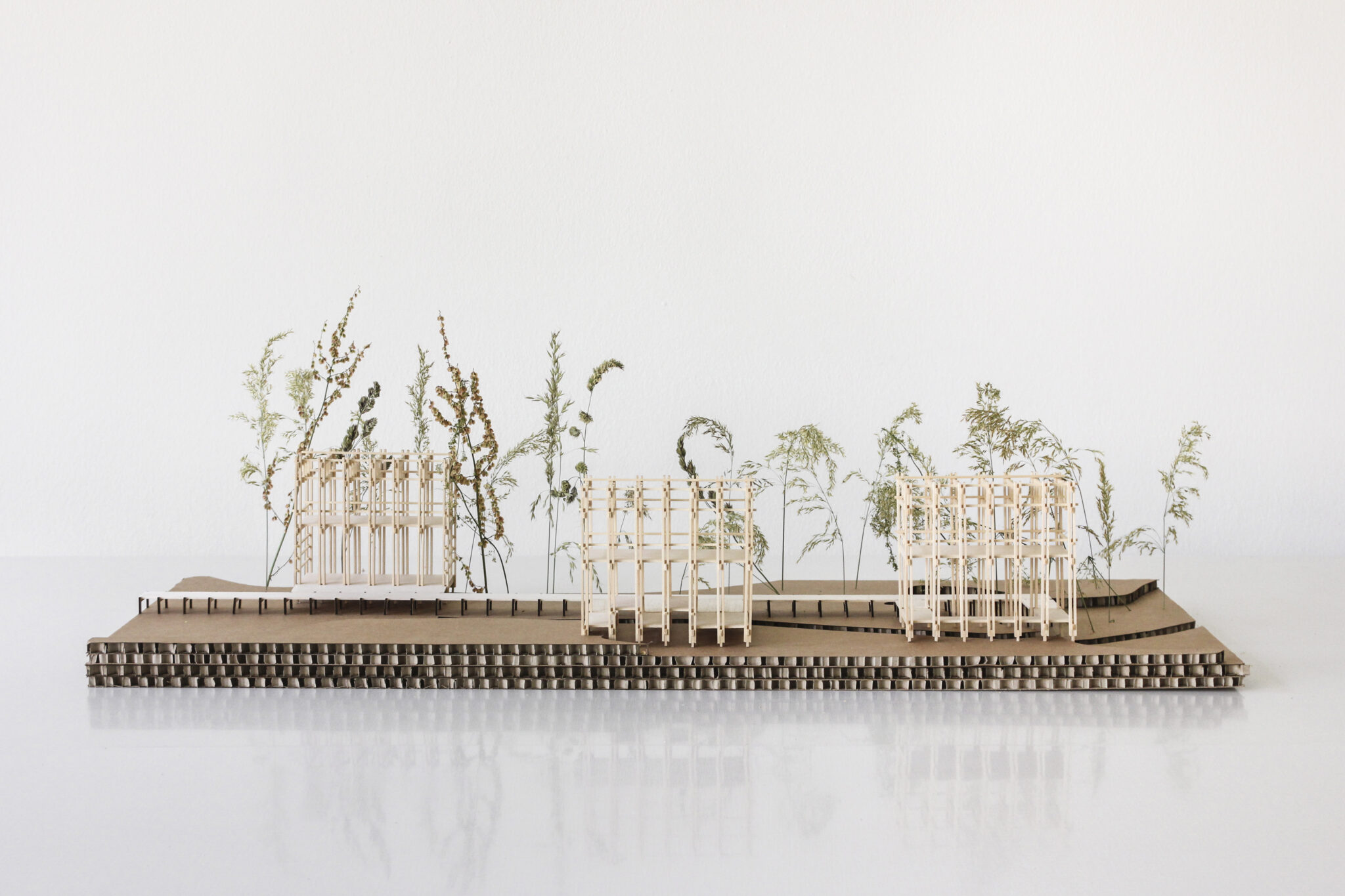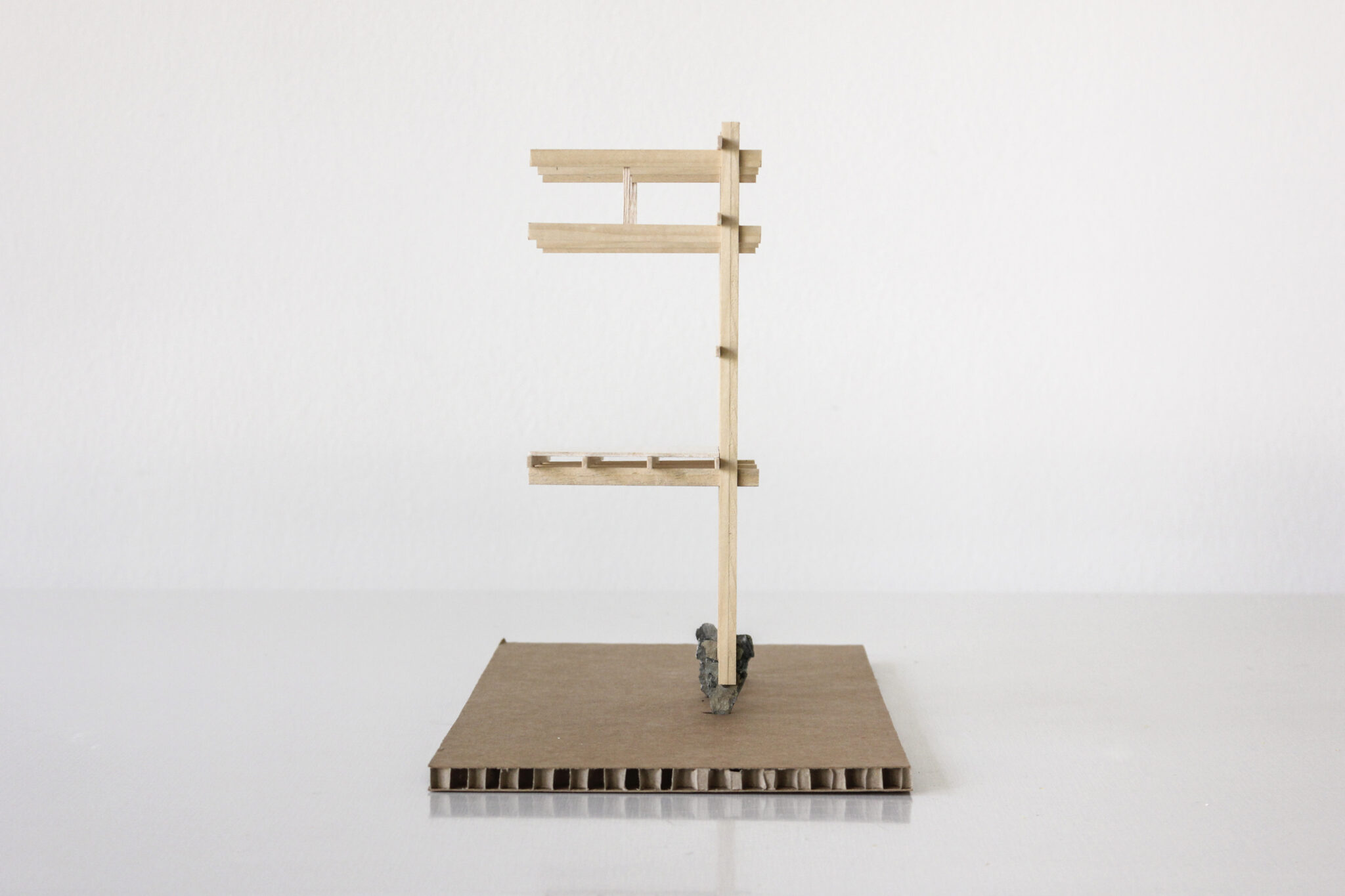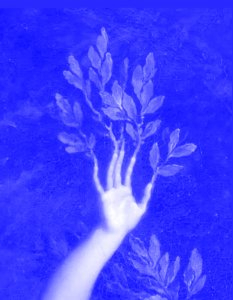Valentina Minoletti
The project is a regional, multi-disciplinary research, interpretation, and educational platform on the wet biotope found on the campus of the Wiener Sängerknaben in Sekirn, Wörthersee: the project aims to disclose and rediscover the Sekirn Creek, striving to both preserve its unique characteristics and explore the potentials of the area.
The Wörthersee region hosts a variety of diversified but fragile ecosystems and biotopes; acknowledging and protecting the local flora and fauna is of incredible importance for the survival of the area. It is vital to know what the different zones are and how their needs articulate, as each area has characteristics and potentials that need to be addressed specifically. Unfortunately, various threatening factors have been jeopardizing the cultural and territorial integrity of the area, such as an incredibly intense soil exploitation due to luxury tourism: increasingly more developers are constructing without a permit, destroying ecosystems, and threatening the biodiversity. As a result, the locals are abandoning the region, while the landscape culture gets compromised and the traditional identity of the area endures a significant blow.
In order to respond to the issue of the land and hopefully change the course of the events, the project focuses on a rather neglected area of the plot – the Sekirn Creek. Incredibly rich in biodiversity, its course hides among the reeds. The creation of a common longitudinal path – which pivots on the existing building – creates an evident yet gentle frame for the water flow, highlighting its presence. The building units are situated along the path and are divided between a more experimental botanical garden and three open air research units. The project clearly articulates the programmatic functions of the buildings, all of which include an exploration and research area, an interpretation zone and a flexible sun screening system, making the ensemble characterized and coherent. The architecture is kept simple: a straightforward and unpretentious repetition of wooden frames is clamped around rough and irregular phyllite stone foundations, which can be found on site.
This sensitive yet conceptually radical intervention focuses on creating a new and strong identity for the southeast part of the property, while educating the visitors on the landscape culture and preservation of the area.
Fotos – Paul Sebesta | Fotografie – paul sebesta | fotografie





